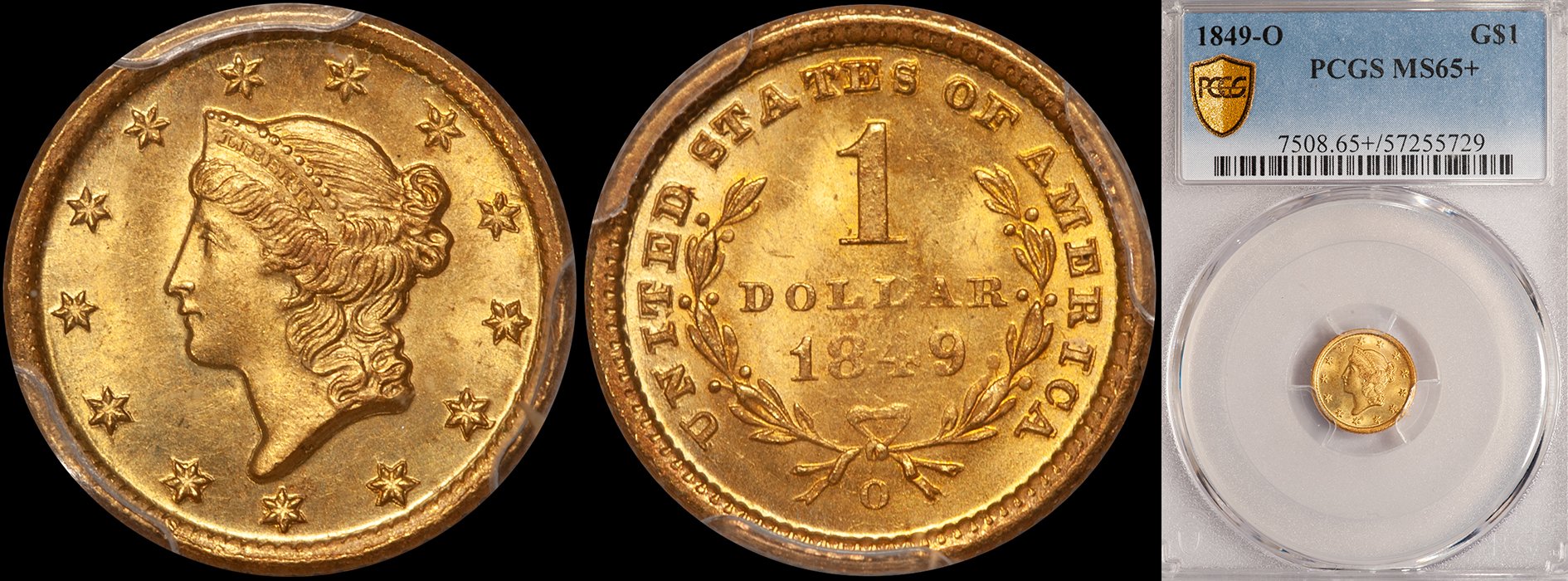In many series, collectors are slaves to the holder. By this, I mean, they make purchases which aren’t always prudent based on what a PCGS or NGC holder says. This is most prevalent in Registry-oriented 20th century series such as Lincoln Cents and Washington Quarters (amongst others) - series in which a single grading point can inflate the value of a coin by 5, 10 or even 20 times.
This tends not to be the case with classic 19th century gold coins, but every now and then a situation arises in which a coin which is theoretically the highest graded may not be the best purchase for an advanced collector.
A situation involving this scenario emerged at the recent Baltimore Stacks Bowers auction and I’d like to share my thoughts.
Please note that this is not meant to be a negative rant about the following coin, and the buyer of this coin is, no doubt, happy with his or her purchase.
The 1876-S eagle has long been a favorite issue of mine. It has a small mintage of just 5,000 coins, and I think five or six dozen exist, with most in the VF to EF grade range. I have never seen an 1876-S which grades higher than AU53 to AU55, and my best estimate is that there are around six or seven properly graded AU examples known. Until recently it was an unloved and generally undervalued coin.
In the recent Stacks Bowers Baltimore show, a newly graded PCGS AU55 example of this date was offered. In theory, this is the “finest known” example as it is a population one, none finer, coin. It sold for $22,325. I examined the coin and, in my opinion, it was sub-par for the grade. (Had it been a very choice coin for the grade, I think it would have brought closer to $30,000).

While $10 Libs are not a typical Registry Set series, there are a few advanced, deep-pocketed collectors who are specializing in these coins. And the opportunity to acquire a PCGS finest known coin—with the “points” this would add to such a set—is an unusual opportunity to say the least.
But what if a cheaper example of this same date was actually a “better” coin? What if an 1876-S eagle graded AU50 by PCGS were more original, more appealing (in my opinion), and a fraction of the price?
Back in their 2011 ANA auction, Stacks Bowers sold a PCGS AU50 example of an 1876-S eagle. I didn’t buy it even though, in retrospect, I probably should have.
Take a look at this coin:

I think it compares favorably to the PCGS AU55 shown above. It is a bit less “meaty” but it is more original, less “baggy,” and has comparable—if not better—overall eye appeal.
Most intriguingly, it sold for just $6,325 - or around a quarter of what the AU55 brought.
Here is an instance where Registry-mania caused a so-so coin to sell for a lot of money but didn’t have an impact on a nice, slightly lower grade coin because it wasn’t “the finest known.”
Examples like this are becoming more and more prevalent in the area of 19th century United States gold coins.
The moral of the story? Don’t always trust the plastic you buy to equate with the best value in your series. There is no substitute for knowledge and, in many cases, this knowledge will save you money and provide you with a better overall collection.
Do you buy rare gold coins?
Do you have gold coins to sell?
Would you like to have the world’s leading expert working directly with you when assembling a set?
Contact Doug Winter at 214.675.9897 or by email at dwn@ont.com.














